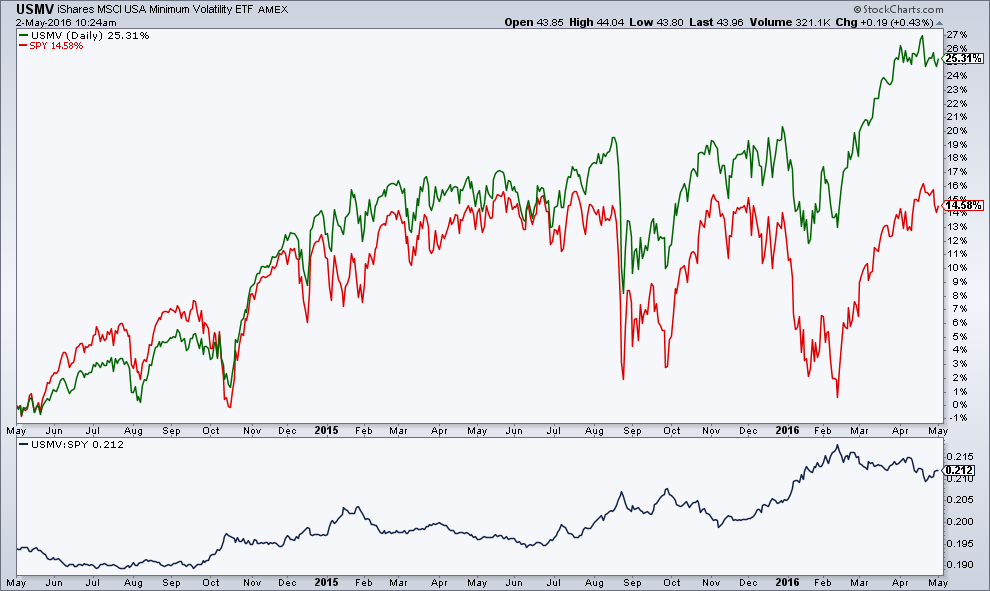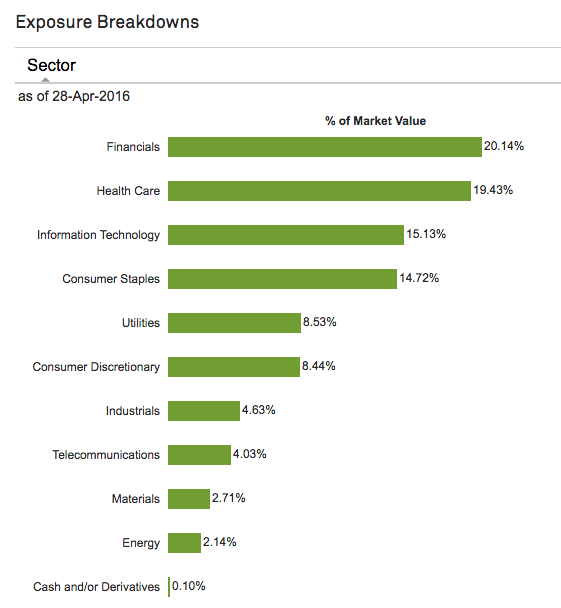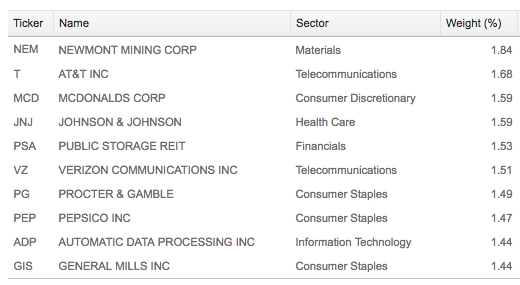Every once in awhile, a piece of data cuts through all the noise and tells you exactly what’s going on.
In terms of investor sentiment, the numerous polls that are conducted regularly – from the AAII (retail) to the various surveys of institutional investors – are way too noisy from week to week and only ring a bell at extremes. But looking at what people are actually doing – well, maybe it can’t be entirely quantified as being meaningful, but I much prefer it to asking people what they might do. People are notoriously bad (or aspirational) about predicting their own behavior. Look at the annually nonsensical Christmas shopping polls for a great example.
So about that data point…
If I gave you a guess as to the most-purchased ETF of 2016 right now, you might say the SPY or the GLD. You’d have a good shot at being right, SPY being the standard building block of passive portfolios and gold having staged an incredible rebound thus far. But you’d be wrong right now.
Because this year’s flows leader is a relatively little-known ETF that seeks to provide investors with stock market exposure minus a lot of volatility. Here’s ETF Trends:
For much of the year, the SPDR Gold Trust (GLD) was the flows leader. That changed this week when the iShares MSCI USA Minimum Volatility ETF (USMV) quietly stole the top spot.
So far in 2016, USMV has taken in $4.5 billion in investor capital, compared with $4.4 billion for GLD, according to FactSet data.
USMV now boasts an impressive $12.5 billion in assets under management
USMV is an iShares product that owns S&P 500 large caps that demonstrate a lower amount of volatility than the overall index. It’s up 4.6% year-to-date, cresting near all time highs, while the SPY is only up 1.1%. It’s got a competing product from PowerShares called SPLV, which is also no slouch this year, up 3.9%.
The popularity of these two ETFs is perfectly emblematic of the mood these days among financial advisors and their clients. And if you know anyone in the ETF business, they’ll tell you that the principal determiners of flows are in this order: 1) recent performance 2) whether or not advisors have been sold on them and 3) recent performance. ETFs do not sell themselves and retail do-it-yourselfers are not the drivers of AUM flows – only advisors can really move the ETF needle. The iShares product probably has an edge on SPLV because it’s based on an MSCI index, which is what many advisors use as a benchmark in their performance reporting.
Now let me unpack what you’re about to see in the chart below…
You’re looking at the two-year view of the iShares MSCI USA Minimum Volatility ETF (green) vs the SPY (red). You can see the separation that starts to take place coming out of last August’s mini-flash crash. In the bottom pane, you’re looking at a ratio chart of the USMV and the SPY, you can see the steady trend toward this style of allocation as clear as day.

A collective financial advisor decision was made in the aftermath of August – “Okay, we’ll stay in, but we can’t take the full volatility of the stock market anymore.”
You can only imagine the calls that were coming in – “Is this it? Here we go again!”
To which the advisors’ response was something along the lines of “Don’t worry, I have an idea…” The iShares and PowerShares wholesalers did their work well.
Seeing this fund grow to $12.5 billion, having taken in a third of that in the first four months of this year, tells you everything you need to know about current sentiment. Advisors are tacitly accepting that they must be in US stocks, but because of the angst of their clients, they’re offering them exposure through a vehicle that purports to offer “minimum” volatility.
Here are the sector weights and top ten stock holdings:


Now, putting aside the fact that volatility is the mothers’ milk of future returns (see: Why the Stock Market Has To Go Down), this trade may continue to work for awhile. Unfortunately, it won’t work forever. Because nothing does. I have no idea what the trigger might be to upset the “minimum vol” apple cart (June rate hike, perhaps?), but eventually it’ll either spill over or, at a minimum, substantially underperform the broader market.
Because this happens to every in-vogue investment trend, eventually. Even a relatively demure one like low-vol. You can set your watch by it.




… [Trackback]
[…] Find More Information here to that Topic: thereformedbroker.com/2016/05/02/everything-you-need-to-know-about-sentiment-right-now/ […]
… [Trackback]
[…] Find More here on that Topic: thereformedbroker.com/2016/05/02/everything-you-need-to-know-about-sentiment-right-now/ […]
… [Trackback]
[…] Read More here on that Topic: thereformedbroker.com/2016/05/02/everything-you-need-to-know-about-sentiment-right-now/ […]
… [Trackback]
[…] Find More on to that Topic: thereformedbroker.com/2016/05/02/everything-you-need-to-know-about-sentiment-right-now/ […]
… [Trackback]
[…] Read More here to that Topic: thereformedbroker.com/2016/05/02/everything-you-need-to-know-about-sentiment-right-now/ […]